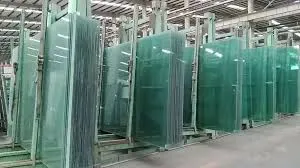Understanding Mirror Square Foot Prices A Comprehensive Overview
In the realm of real estate and interior design, the concept of square foot pricing often plays a crucial role in determining the value and cost of various materials, including mirrors. The term mirror square foot price refers to the cost measurement applied to mirrors when buying or installing them. This pricing model is particularly pivotal in both residential and commercial settings where aesthetics, functionality, and cost-efficiency intersect.
What is Mirror Square Foot Pricing?
Mirror square foot pricing entails calculating the cost of mirrors based on their total surface area. This price metric is essential for various stakeholders, including homeowners, interior designers, contractors, and architects, as it facilitates straightforward budgeting and planning for mirror installations and replacements.
To compute the square foot price, one would typically measure the width and height of the mirror and convert those dimensions into square feet. For instance, a mirror that measures 3 feet by 5 feet would encompass 15 square feet. If the market rate for mirrors is $50 per square foot, the total cost for this mirror would amount to $750.
Factors Influencing Mirror Square Foot Pricing
1. Material Quality The type of glass used to make the mirror significantly influences its price per square foot. High-quality, reflective glass typically comes at a higher cost due to its durability and superior aesthetic appeal.
2. Texture and Finish Mirrors can have various finishes, such as frosted, beveled, or etched. Specialty finishes generally increase the square foot price, as they require more intricate manufacturing processes.
3. Thickness The thickness of the mirror also plays a crucial role in determining price. Thicker mirrors not only serve structural purposes but may also offer better reflection quality, leading to higher pricing.
4. Brand and Design Recognized brands or designer mirrors can command a premium price per square foot. Unique or custom designs may also result in varied pricing due to the craftsmanship involved.
5. Installation Requirements Installation costs can also impact the overall pricing. Mirrors that require complex installations, such as those in hard-to-reach areas or custom wall fixtures, may incur additional labor costs, affecting the total investment.
6. Volume Discounts For larger-scale projects—like hotels, commercial establishments, or expansive residential renovations—contractors often negotiate lower square foot prices. Buying in bulk can result in significant savings.
mirror sq ft price
The Benefits of Understanding Mirror Square Foot Pricing
For homeowners and designers, grasping the concept of mirror square foot pricing yields several advantages
- Budgeting Knowing how to calculate the costs based on square footage allows for more accurate budgeting and avoids unexpected expenses.
- Comparison Shopping Understanding pricing structures helps compare costs across suppliers, enabling consumers to find the best deals.
- Design Decisions Awareness of how different mirror styles, sizes, and materials affect overall costs ensures that consumers can make informed design choices without compromising quality.
- Investment Insight For those investing in real estate, understanding mirror pricing helps assess property value, especially when enhancing aesthetic aspects can increase marketability.
Trends in the Mirror Market
In recent years, there has been a growing trend towards eco-friendly and sustainable materials in many consumer markets, including mirrors. Biodegradable and low-emission materials are becoming increasingly popular, which may come at a premium price but align with modern sustainability goals.
Moreover, technology has influenced mirror design—smart mirrors equipped with LED displays and touch capabilities are gaining traction in contemporary interior design. These high-tech variants not only cost more per square foot but also add a functional layer to traditional mirror usage.
Conclusion
Understanding mirror square foot pricing is essential for anyone involved in purchasing or installing mirrors in various settings. This pricing model allows for simplistic calculations in budgeting, promotes informed decision-making, and encourages savvy shopping. As the market continues to evolve with new materials and technologies, keeping abreast of trends and pricing will serve as a helpful tool for optimizing investments in interior design and real estate. For both aesthetics and functionality, mirrors hold a unique place, and understanding their costs can enhance the overall value of any space.
 Afrikaans
Afrikaans  Albanian
Albanian  Amharic
Amharic  Arabic
Arabic  Armenian
Armenian  Azerbaijani
Azerbaijani  Basque
Basque  Belarusian
Belarusian  Bengali
Bengali  Bosnian
Bosnian  Bulgarian
Bulgarian  Catalan
Catalan  Cebuano
Cebuano  Corsican
Corsican  Croatian
Croatian  Czech
Czech  Danish
Danish  Dutch
Dutch  English
English  Esperanto
Esperanto  Estonian
Estonian  Finnish
Finnish  French
French  Frisian
Frisian  Galician
Galician  Georgian
Georgian  German
German  Greek
Greek  Gujarati
Gujarati  Haitian Creole
Haitian Creole  hausa
hausa  hawaiian
hawaiian  Hebrew
Hebrew  Hindi
Hindi  Miao
Miao  Hungarian
Hungarian  Icelandic
Icelandic  igbo
igbo  Indonesian
Indonesian  irish
irish  Italian
Italian  Japanese
Japanese  Javanese
Javanese  Kannada
Kannada  kazakh
kazakh  Khmer
Khmer  Rwandese
Rwandese  Korean
Korean  Kurdish
Kurdish  Kyrgyz
Kyrgyz  Lao
Lao  Latin
Latin  Latvian
Latvian  Lithuanian
Lithuanian  Luxembourgish
Luxembourgish  Macedonian
Macedonian  Malgashi
Malgashi  Malay
Malay  Malayalam
Malayalam  Maltese
Maltese  Maori
Maori  Marathi
Marathi  Mongolian
Mongolian  Myanmar
Myanmar  Nepali
Nepali  Norwegian
Norwegian  Norwegian
Norwegian  Occitan
Occitan  Pashto
Pashto  Persian
Persian  Polish
Polish  Portuguese
Portuguese  Punjabi
Punjabi  Romanian
Romanian  Russian
Russian  Samoan
Samoan  Scottish Gaelic
Scottish Gaelic  Serbian
Serbian  Sesotho
Sesotho  Shona
Shona  Sindhi
Sindhi  Sinhala
Sinhala  Slovak
Slovak  Slovenian
Slovenian  Somali
Somali  Spanish
Spanish  Sundanese
Sundanese  Swahili
Swahili  Swedish
Swedish  Tagalog
Tagalog  Tajik
Tajik  Tamil
Tamil  Tatar
Tatar  Telugu
Telugu  Thai
Thai  Turkish
Turkish  Turkmen
Turkmen  Ukrainian
Ukrainian  Urdu
Urdu  Uighur
Uighur  Uzbek
Uzbek  Vietnamese
Vietnamese  Welsh
Welsh  Bantu
Bantu  Yiddish
Yiddish  Yoruba
Yoruba  Zulu
Zulu 

